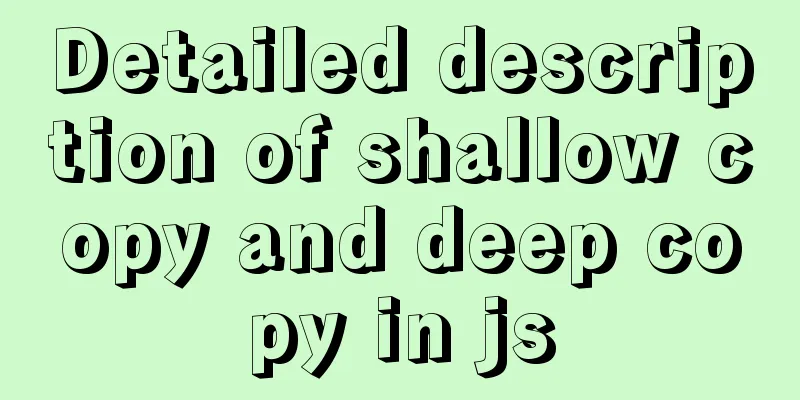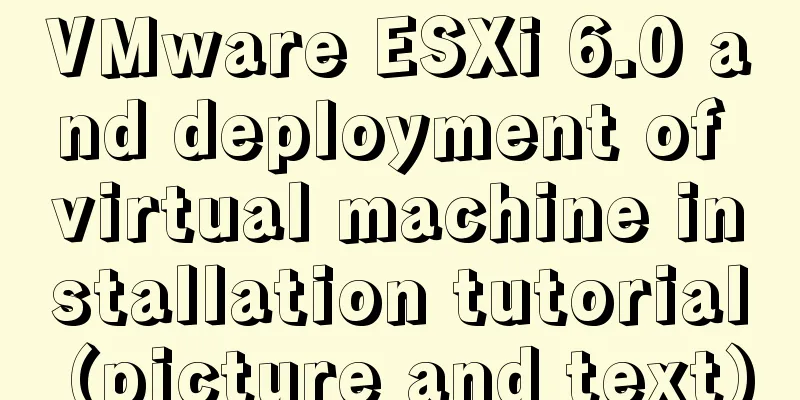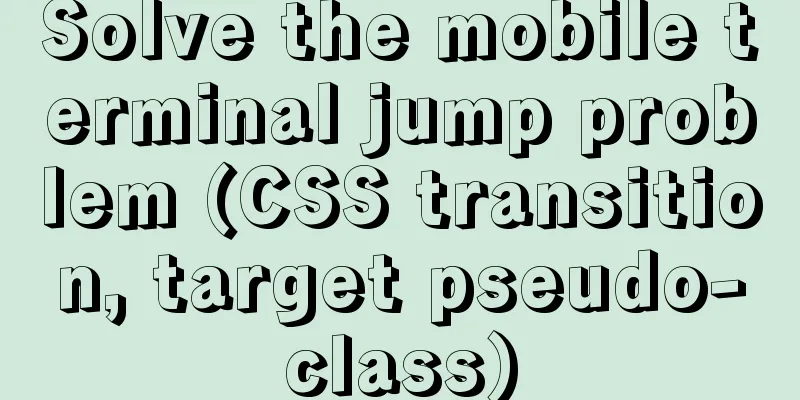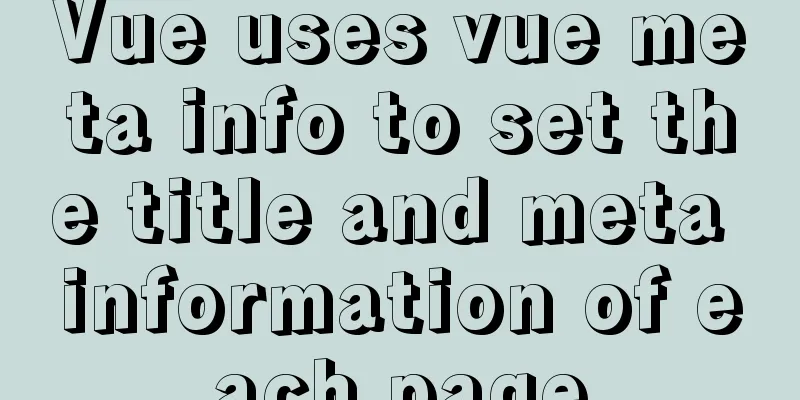Detailed description of shallow copy and deep copy in js

|
Preface: Before studying the following article, let's briefly understand the knowledge of memory. The following is a brief introduction 1. js memoryjs memory, or the memory of most languages is divided into stack and heap. The variable values of basic data types are allocated on the stack, and the variable values of reference data types are allocated on the heap. The stack only stores the addresses of specific objects in the heap. 2. AssignmentFor basic data types, the assignment operation is a copy, that is, the new and old variables will not affect each other. var a = 1; var b = a; b = 2; console.log(b); // 2 For reference data types, the assignment operation simply adds a variable in the stack that points to the object in the heap, that is, copies the reference address. The new and old variables will affect each other, that is, if the object value is changed on the new variable, the corresponding value of the old variable will also change.
var a = {
name: "mike"
};
var b = a;
b.name = "jack";
console.log(a); // {name: "jack"}
3. Shallow copyFor basic data types and data without nested objects, all operations are copy operations, and the new and old variables will not affect each other.
var a = {
name: "mike"
};
var b = {};
b.name = a.name;
b.name = "jack";
console.log(a) // {name: "mike"}
However, for data with nested objects, a shallow copy only copies the first-level objects, and the values at deeper levels are still copied reference addresses.
var a = {
name: "mike",
language:
first: "english",
second: "chinese"
}
};
var b = {};
b.name = a.name;
b.name = "jack";
b.language = a.language;
b.language.first = "japanese"
console.log(a) // { language : {first: "japanese", second: "chinese"}}
js implements shallow copy, the idea is : traverse each attribute of
function shallowCopy(target) {
let result = {};
for (const key in target) {
result[key] = target[key];
}
return result;
}
4. Deep Copy A deep copy is a complete copy, and the new and old variables will not affect each other.
function clone(target) {
if (typeof target === "object") {
//Judge whether it is an array let result = Array.isArray(target)? [] : {};
for (const key in target) {
result[key] = clone(target[key]);
}
return result;
} else {
return target;
}
}
This is the end of this detailed article about shallow copy and deep copy of assignment in js. For more relevant content about shallow copy and deep copy of assignment in js, please search previous articles on 123WORDPRESS.COM or continue to browse the related articles below. I hope you will support 123WORDPRESS.COM in the future! You may also be interested in:
|
<<: UDP DUP timeout UPD port status detection code example
>>: How MySQL Select Statement is Executed
Recommend
React implements the sample code of Radio component
This article aims to use the clearest structure t...
12 Javascript table controls (DataGrid) are sorted out
When the DataSource property of a DataGrid control...
Discuss the value of Web standards from four aspects with a mind map
I have roughly listed some values to stimulate ...
What knowledge systems do web designers need?
Product designers face complex and large manufactu...
Install MySQL in Ubuntu 18.04 (Graphical Tutorial)
Tip: The following operations are all performed u...
How to disable the automatic password saving prompt function of Chrome browser
Note: In web development, after adding autocomplet...
Install zip and unzip command functions under Linux and CentOS (server)
Install zip decompression function under Linux Th...
Explanation of CAST and CONVERT functions for type conversion in MySQL database
MySQL's CAST() and CONVERT() functions can be...
How to run postgreSQL with docker
1. Install Docker. Reference URL: Docker Getting ...
CentOS 6-7 yum installation method of PHP (recommended)
1. Check the currently installed PHP packages yum...
Use the sed command to modify the kv configuration file in Linux
sed is a character stream editor under Unix, that...
MySQL online deadlock analysis practice
Preface I believe that everyone has had a simple ...
The process of quickly converting mysql left join to inner join
During the daily optimization process, I found a ...
Mysql Workbench query mysql database method
Mysql Workbench is an open source database client...
How to use resize to implement image switching preview function
Key Points The CSS resize property allows you to ...









